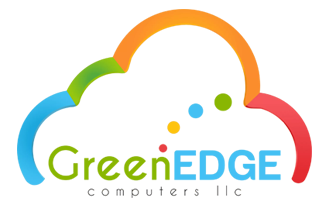Businesses today face an increasingly complex threat landscape with sophisticated cyberattacks that can lead to massive financial losses and reputational damage. In 2023 alone, the average cost of a data breach was over $4 million. As cybercriminals continue to refine their techniques, no organization is immune from cyber threats.
Managed detection and response (MDR) solutions provide 24/7 monitoring, detection, investigation, and response capabilities delivered by experienced security professionals and supported by advanced technologies. With the fast-paced evolution of the threat landscape, MDR has become an essential service for organizations of all sizes looking to bolster their security postures in 2024 and beyond.
Accelerated Digitization Has Expanded the Attack Surface
The rapid digitization brought on by the pandemic has led businesses to adopt cloud-based tools and enable remote work. While these trends have made organizations more agile and collaborative, they have also dramatically expanded the attack surface available for exploitation by hackers. Most businesses lack the internal resources to keep up with monitoring their entire hybrid IT environment around the clock.
Adding fuel to the fire, the global talent crunch has made it extremely difficult for organizations to recruit and retain skilled cybersecurity professionals. The cybersecurity skills gap is projected to reach 3.5 million unfilled positions by 2025. This is where MDR providers can help extend IT and security teams’ capabilities through specialist security analysts, threat intelligence, and advanced technologies.
Also Read: 2024 Cybersecurity Experts Predictions: Future of Digital Defense
Compliance Mandates Are Getting Stricter
Regulatory compliance is another key driver propelling the adoption of MDR solutions. Data protection and privacy regulations like GDPR, California’s CCPA, among others, have raised the stakes for non-compliance – both in terms of financial penalties as well as brand reputation.
Moreover, guidelines from industry bodies like the National Institute of Standards and Technology (NIST), ISO, and CERT are also evolving quickly to keep up with the threat landscape. MDR helps businesses adhere to compliance mandates through continuous security monitoring, implementation of appropriate controls, and creation of essential documentation.
MDR Empowers Businesses With Better Visibility, Expertise, and Faster Response
The core value proposition of an MDR solution lies in providing comprehensive visibility into the threat landscape, force multiplication through specialized security analysts, and significantly faster incident response.
MDR providers monitor an organization’s entire IT infrastructure including cloud, endpoints, networks, and apps using advanced sensors and threat intelligence feeds. Their security operations centers (SOCs) serve as an extension of clients’ internal security teams, allowing for around-the-clock vigilance at an affordable price point.
Research shows that MDR users save more than $3 million annually in cyber damages compared to companies without an MDR solution. Detect-to-respond times also reduce drastically from industry average of over 200 days to less than 60 minutes with MDR capabilities.
Key MDR Capabilities to Safeguard Businesses Now and In Future
Advanced Endpoint Monitoring and Response
Protecting endpoints has become paramount with the remote and hybrid work models. MDR solutions extend visibility and control across endpoints through advanced threat hunting, indicators of attack monitoring, automated response via security orchestration playbooks, and integration with other core security technologies.
Zero Trust Network Monitoring
The expanding remote attack surface calls for a zero trust approach across networks. MDR facilitates this by providing complete visibility into internal and external network traffic via flow logs. Expert analysts can quickly suspect foul play, backtrack network communication trails during threat hunting, and initiate tactical containment procedures.
Risk-based Vulnerability Management
MDR services help strengthen cyber resilience by identifying vulnerabilities across the expanded attack surface through frequent risk-based scans. Unique risk scoring allows clients to prioritize remediation based on criticality of assets and vulnerability exploitability rather than just relying on CVSS severity ratings.
Also Read: Why You Need a Security Architecture Assessment from Cyrcass?
Cloud Security Posture Management
MDR solutions help enforce tight security controls for cloud instances through built-in Security Posture Management (CSPM) capabilities or integrations with leading CSPM tools. This allows clients to fix misconfigurations, detect suspicious activities, compliance gaps or unsanctioned cloud apps, and enforce baseline policies across cloud environments.
Security Awareness and Training
Enhancing human readiness through continuous skill improvement is imperative for holistic cyber risk management. MDR providers incorporate security awareness and training focused on situational readiness to help employees across the business minimize human risk.
The Need for MDR Will Continue to Rise
Recent projections indicate the MDR market is likely to expand at a CAGR of nearly 19% through 2027, with more businesses waking up to its benefits. The demand will be especially high among companies struggling to monitor modern remote and cloud-centric environments.
While traditional security tools like antivirus suites, firewalls or intrusion detection systems continue to retain relevance, they are increasingly proving inadequate in tackling today’s multi-vector threats. MDR perfectly bridges this security gap for understaffed corporate security teams through expert human intelligence and state-of-the-art technologies.
As cyberspace becomes the new battlefield of the future, it is crucial for businesses to partner with competent MDR specialists that can serve as an around-the-clock cybersecurity force multiplier. MDR empowers organizations with resilience today and helps them maintain a robust security posture as the threatscape continues to intensify.
What is Managed Detection and Response (MDR)?
- Managed Detection and Response (MDR) is a cybersecurity service that provides continuous monitoring of an organization’s IT environment to detect and respond to security threats in real-time. It combines advanced technology with human expertise to identify, investigate, and mitigate security incidents.
How does Managed Detection and Response differ from traditional cybersecurity approaches?
- Unlike traditional cybersecurity solutions that focus primarily on prevention, Managed Detection and Response (MDR) takes a proactive approach by actively monitoring networks, endpoints, and systems for signs of compromise. MDR providers leverage advanced analytics, threat intelligence, and skilled analysts to detect and respond to threats faster and more effectively.
What are the key benefits of adopting Managed Detection and Response?
- Some key benefits of Managed Detection and Response include:
- Enhanced threat detection capabilities: MDR services use advanced analytics and machine learning to identify both known and unknown threats.
- Rapid incident response: MDR providers offer round-the-clock monitoring and response, reducing the time to detect and mitigate security incidents.
- Access to expert cybersecurity talent: MDR services provide access to skilled security analysts who can help organizations navigate complex threats and respond effectively.
- Cost-effectiveness: By outsourcing cybersecurity monitoring and response to MDR providers, organizations can often reduce the costs associated with maintaining an in-house security team and infrastructure.
What types of organizations can benefit from Managed Detection and Response?
- Managed Detection and Response (MDR) is suitable for organizations of all sizes and across various industries. However, it is particularly beneficial for businesses that lack the resources or expertise to effectively manage their cybersecurity posture internally. Additionally, industries with stringent compliance requirements, such as healthcare, finance, and government, can benefit from the continuous monitoring and rapid incident response capabilities offered by MDR services.
How does Managed Detection and Response complement existing security measures?
- Managed Detection and Response (MDR) augments existing security measures by providing an additional layer of defense against advanced threats. It works alongside other cybersecurity technologies such as firewalls, antivirus software, and intrusion detection systems to provide comprehensive protection. MDR enhances visibility into the organization’s IT environment, detects threats that may evade traditional security controls, and helps organizations respond quickly to mitigate potential damage.



